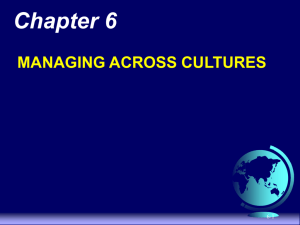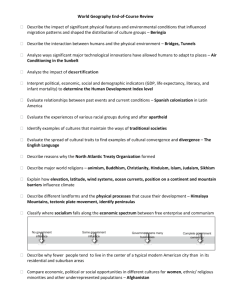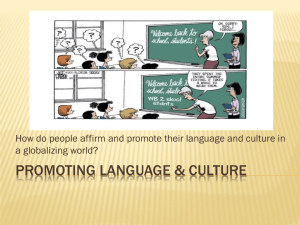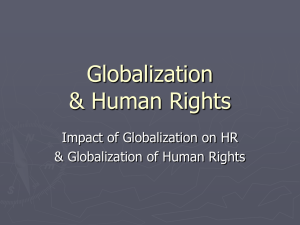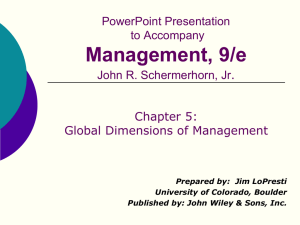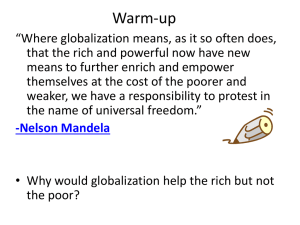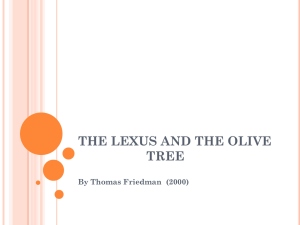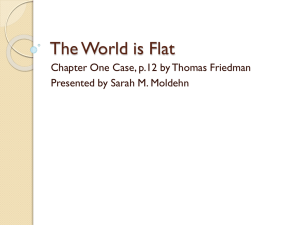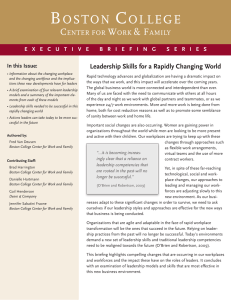Intercultural Communication in International organizations
advertisement
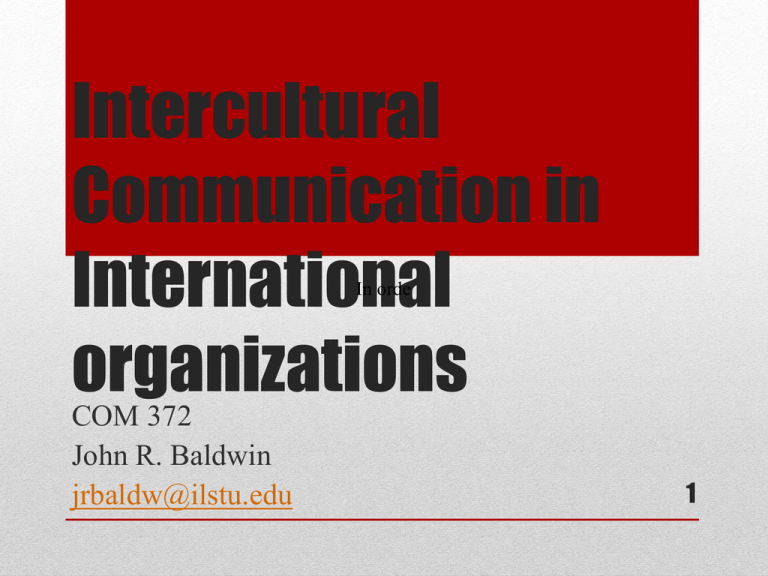
Intercultural Communication in International organizations COM 372 In orde John R. Baldwin jrbaldw@ilstu.edu 1 • • • • • Existence of a social collective Organizational and individual goals Coordinating activities Organizational Structure Embedded within an environment of other organizations 5 Aspects of Organizations 2 • Messages • • • • Vocabulary Themes Temporality Architecture • Symbolic forms • Metaphors • Stories • Fantasy themes • Expectations • • • • • Norm Roles Agenda Motives Style • Purpose: Locating meanings, values Organizational Cultures (Bantz, 1993) 3 • What is Organizational Culture??? (BGM&S, Ch. 15, p. 7) Organizational Cultures (Bantz, 1993) 4 • Messages • • • • Vocabulary Themes Temporality Architecture • Symbolic forms • Metaphors • Stories • Fantasy themes • Expectations • • • • • Norm Roles Agenda Motives Style • Purpose: Locating meanings, values Organizational Cultures (Bantz, 1993) 5 • Understanding organizational cultures (p. 23) • Relationship between employees and organization • Hierarchical system (supervisors, subordinates) • General employee views about “destiny, mission and objectives, and their roles in all of this” (p. 23) Organizational Cultures 6 • Corporate Culture Models • • • • Family Eiffel Tower Guided Missile Incubator Organizational Cultures 7 Trompenaars & Hampden-Turner • Individualismcommunitarianism • Neutral-affective • Specific-diffusive • Achievement-ascription Hofstede etc. • Individualismcollectivism • Power distance • Masculinity-femininity • Uncertainty avoidance • Long/short-term orientation Cultural variation in organizations 8 Time (is not on our side) • Sequential/monochronic / linear-active versus synchronic/polychronic/ multi-active Thoughtspeech • Impulsive • Reflective • Reactive Cultural variation in organizations 9 10 • Mini-Case-Study: Your company is opening a new branch in Nairobi (Kenya). Going back to different cultural orientations, brainstorm for a list of all the ways you can think of that your organization might need to change to work in the new culture. • Discussion Question: How is the current generation of young men and women characterized in your culture? Do you think, as some reports suggest, that today’s generation is made up of entitled, narcissistic, self-absorbed, and selfobsessed praise seekers worldwide? Cultural variation in organizations 11 • Types of organizations • Monolithic: Highly homogenous; work within one country • Multinational/Plural: Identify with one country, but work in others • Multicultural: Values cultural diversity, absence of prejudice, minimal intergroup conflict • International: Identify with two or more countries, with people in each culture following own cultural attributes • Global: Identify with global system; treat world as integrated whole, operate “borderless,” asset exchange • Transnational: Make selective decisions for each country, flexible; empower local subsidiaries to play key role; develops shared vision • THOGHT QUESTION: How “diverse” is your organization? (pp. 21-22) Globalization and the changing workplace 12 • What is Globalization? Globalization and the changing workplace 13 • Types of organizations • Monolithic: Highly homogenous; work within one country • Multinational/Plural: Identify with one country, but work in others • Multicultural: Values cultural diversity, absence of prejudice, minimal intergroup conflict • International: Identify with two or more countries, with people in each culture following own cultural attributes • Global: Identify with global system; treat world as integrated whole, operate “borderless,” asset exchange • Transnational: Make selective decisions for each country, flexible; empower local subsidiaries to play key role; develops shared vision • THOGHT QUESTION: How “diverse” is your organization? (pp. 21-22) Globalization and the changing workplace 14 Terms & Ideas • • • • • Knowledge workers Changing social contract Boundaryless careers Portfolio career Virtual work & organizations • Protean careers • Cultural synergy • Cultural intelligence • Convergence versus divergence perspectives Globalization and the changing workplace 15 • What are some ways globalization is changing organizations worldwide? • What are some strengths and limitations of such changes? • Social responsibility: One emerging value: What are some key socially responsible values you think should guide you in your own work? What are some concrete things you can do, as an entry-level worker, as you enter your new organizational life? Globalization and changin workplace 16
